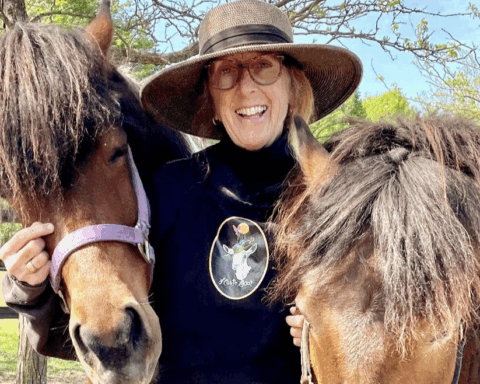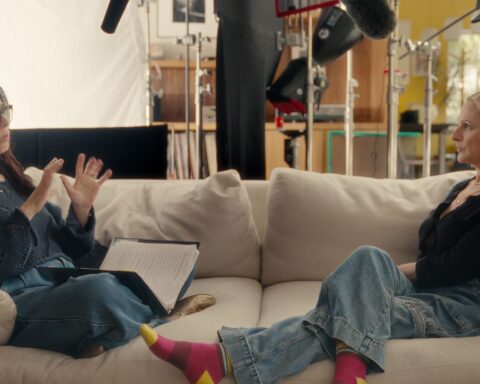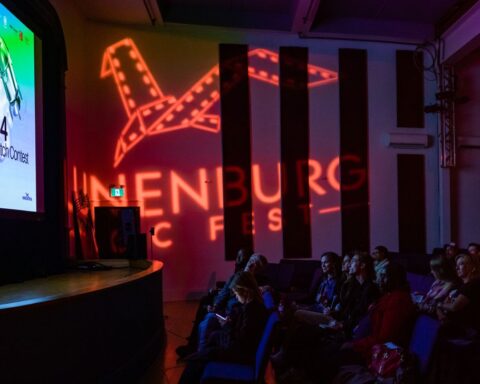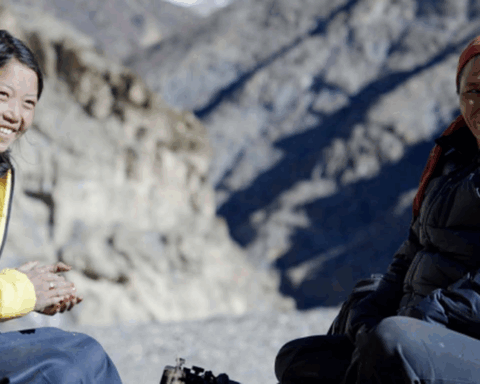Angry Inuk
(Canada, 85 min.)
Dir. Alethea Arnaquq-Baril
Programme: Canadian Spectrum (World Premiere)
“How does a culture with an understated anger confront a group that is exactly the opposite?” asks filmmaker Alethea Arnaquq-Baril in her fiercely passionate doc Angry Inuk. Arnaquq-Baril has zero tolerance for nonsense and the titular angry Inuk of this doc refuses to sit silently from the sidelines. Thank goodness for that.
Arnaquq-Baril’s anger over the misrepresentations of seal hunting perpetuated by the media and environmental activist groups nearly reaches a boiling point, but this inspiring filmmaker keeps her pot coolly a-simmer as she fights against a campaign that has had devastating effects on her people. She’s one to watch, for sure, as Angry Inuk is one of the festival’s most personally political films and incites one to join the fight.
It’s especially interesting to see Angry Inuk after Arnaquq-Baril played a pivotal role in rallying Inuit social media users against the controversial film of the North and its deplorable misrepresentations of Northern communities. (Read the filmmaker’s take in this POV interview.) Arnaquq-Baril’s shrewdest move in the fight against the doc was to hijack the hashtag #ofthenorth and re-appropriate it with positive images of Inuit doing their everyday things. She knows the power of self-representation and, equally so, the influence of viral campaigning.
Her new doc looks at her precursor effort to #ofthenorth as the film depicts her #sealfie campaign that rallied her fellow Inuit to take proud selfies displaying their clothes made with beautiful seal fur. As with #ofthenorth, the #sealfies challenge images of Inuit life one finds in mainstream media. The film itself takes audiences through a basic seal hunt as generations of Inuit—grandparents, children, and grandchildren—search the waters together. Angry Inuk shows the perfectly humane act of killing, gutting, and preparing the seal—not just for its fur, but also for the rich and tasty meats that sustain the community. The film has a counterargument for any false image one has seen before.
Angry Inuk has Arnaquq-Baril play the dual roles of subject and filmmaker as she takes a close, participatory approach to the women and men of her community and invites them to share their stories about the economic necessities entailed within seal hunting. A central ally in the fight is Aaju Peter, a strong-willed seal hunt advocate and lawyer who depends on the sealskins for her livelihood. Peter demonstrates the art of her seamstress craft, which hardly yields the price it deserves for the effort it takes to produce her garments, but she articulates the importance of preserving the practice of seal hunting. It’s a matter of sustainability, both on a practical level for basic survival and on a cultural level as the necessary hunt for seals preserves a way of life in the face of cultural erosion.
Arnaquq-Baril accompanies Peter and several other Inuit as they take their cause to the European Union in an effort to overturn a ban on seal hunting. As with the imbalance in the media, Peter and company are greatly outnumbered by anti-seal activists and their persuasive plush toys, but the film offers a forum previously absent to these unheard voices. There, at a museum, Peter wisely takes the stage at an exhibit of a map of the north and explains the facts that the seal toys and Brigitte Bardot campaigns fail to heed. She offers a captivating lesson on the value of artic land and the various political undercurrents swimming within the Arctic waters that make the situation especially sensitive: the North really is one of the few areas left untapped by industry (relatively speaking) and the film shows that there’s much more than seal fur and meat at stake. Peter, like the director, delivers her talk with a finely mixed cocktail of passion and restrained anger.
Angry Inuk humorously presents the campaigns against seal hunting and Arnaquq-Baril corrects the factual errors of the movement. She reminds the audience that seals aren’t endangered species, that the cutesy white seals of the crusade don’t reside in the arctic, and that the controversial hunt in St. John’s (a rallying point for celebrities) is a different beast from the hunt up North. Similarly, the organisations and NGOs become a key focal point of the director’s sarcastic humour and cutting interrogation. Groups like Greenpeace appear to exploit culture and myth for profit, while higher ups like Sheryl Fink, director of Canadian Wildlife Campaigns for International Fund for Animal Welfare, come off as ironically inhumane. The sheer ignorance of the groups with whom Arnaquq-Baril seeks to have a conversation is staggering. For all the championing of animal rights, these people neglect the needs of another species: humans.
The film uses the element of anger to show the disparate cultures waging war over the seals. On one hand, Angry Inuk presents the easy-going Inuit with their understated anger and their conscious near mystical thorough in using every bit of the seals, from their pelts to their innards. On the other hand, the film shows the irate “southerners” with the slogans, campaigns, and ignorance to the cause against which they wage war. One side wants to have a conversation; the other team wants a diatribe. Implicit within the seal hunt debate is the imposition of one culture upon another within the history of colonising Inuit and Indigenous communities. Through her wisdom and anger, the director uses the campaigns and confrontations to convey two vastly different ways of life that still need to find some common ground.
Angry Inuk screens:
-Monday, May 2 at TIFF Bell Lightbox at 7:00 PM
-Wednesday, May 4 at the Isabel Bader at 1:00 PM
-Saturday, May 7 at TIFF Bell Lightbox at 6:45 PM











